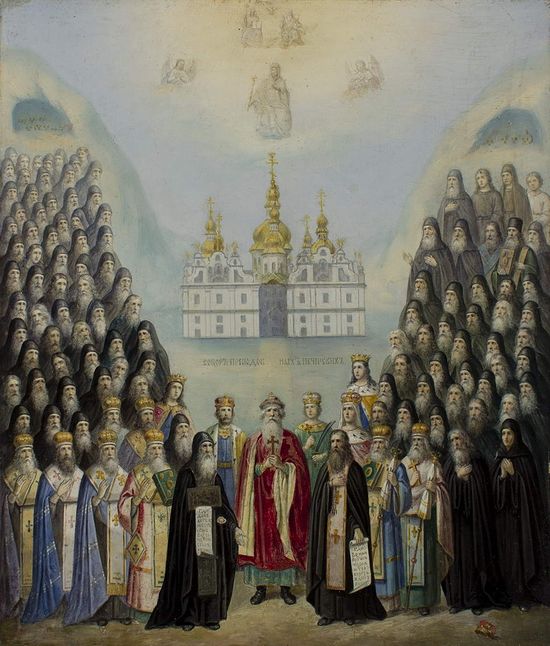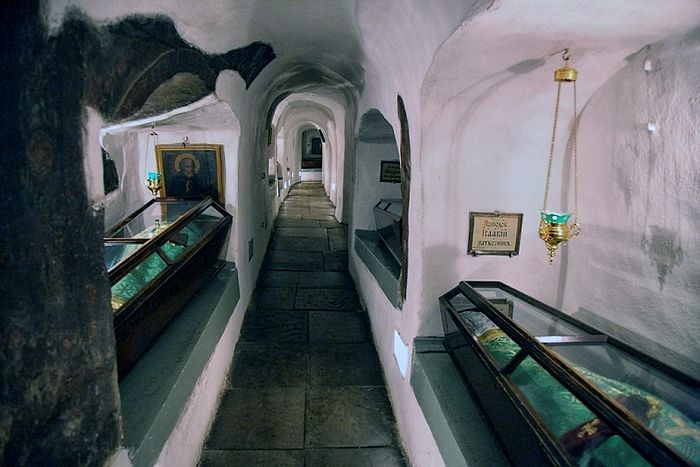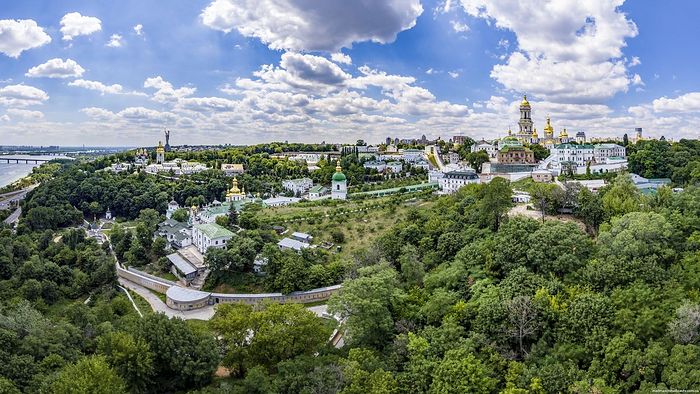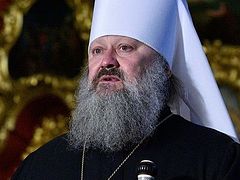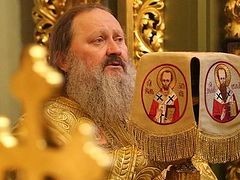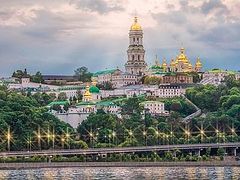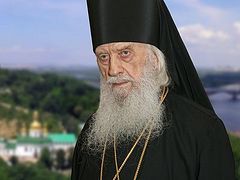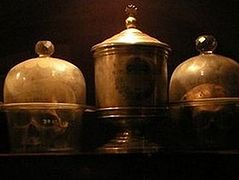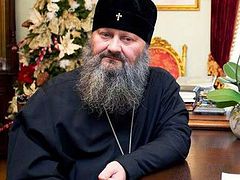Congratulations to all with the feast1 of the Holy Fathers of the Kiev Caves! Let’s take a walk back through history, to the cradle of the Russian Church, where it seems the fate of Holy Rus’ once again rests gently within the walls of that portion of the Mother of God, while great maelstroms of heresy and riots surround her.
Rather than attempting to add to the litany of excellent publications on the feast day, and retell the same glorious stories, let’s take a look and reflect on some stories and aspects of the Lavra that are rarely told in the English language.
Given the tragic invasion of our beloved Ukrainian Orthodox lands by the Constantinople Patriarchate, and the shameful and open support for Nazism among the godless pseudo-Orthodox schismatics, we will examine the repeating history in relation to current events. After all, to understand where we are, and what is happening today, you must go back to the beginning…
A Tale of Bygone Years
This story is over one thousand years old. Kiev—The Mother of Rus’ Cities—and her Lavra of the Dormition of the Mother of God was always at the center. She’s seen it all, so much grief, so much faith, so much heresy, and so much holiness. Hers is a tale of the bygone years, the story from whence came the Russian lands, where in Kiev the first Grand Princes began to rule, and from what source Rus’ has her origin.
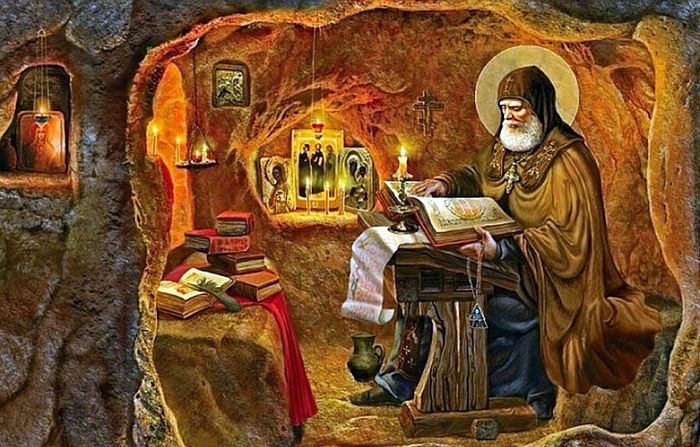 Saint Nestor the Chronicler of Kiev
Saint Nestor the Chronicler of Kiev
Those words should sound familiar to any student of Slavic history—they are a paraphrase of the Primary Chronicle, the most important of the ancient chronicles of Russian history. They were written by St. Nestor of the Kiev Caves—the father of Russian history. Ancient Russian chronicles reveal many things, mainly that Rus’ people already considered themselves to be a single nation at a time when there was no “Germany” or “France” on the map, but instead, East and West Frankia.2
From all this, we learn our first major lesson: Russia and the Rus’ Church is far more ancient than many of those against her would like people to believe.
For example, there is much rhetoric from the Patriarchate of Constantinople of how the “Slavic younger brothers” need to obey the primacy of the “Greek nation”.
I must first say I have nothing but respect and admiration for Hellenic culture and civilization. The basis of traditional (as opposed to post “enlightenment” or post-modern) Western Civilization and European identity is in short, Greco-Roman culture and legacy together with Christian faith—and I always regarded Russia to be a part of that European “western” civilization”, and actually, I would even argue Russia resembles far more the traditional values of pre-schism Europe than the modern West.
But the rhetoric from Istanbul seems post-modernist and unrelated in any way to old Hellenic culture. Quite frankly, it seems bigoted and racist. It seems the Phanar postulates that they—citizens of Istanbul, Turkey—have the right to the ancient legacy of Constantinople, but the Rus’ Church3 does not have the right to the ancient legacy of Kiev. And make no mistake about how ancient the Russian Church is…
Kiev Caves Lavra—a sister of Mt. Athos.
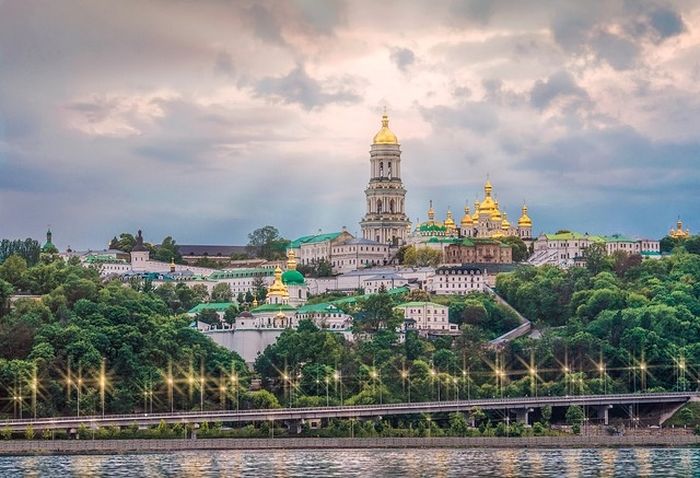
To put it in perspective, Mount Athos arose in the established form we recognize in the eighth century;4 however the development of its great monasteries as we know them today seems to date mostly from between the ninth and fourteenth centuries. The Great Lavra on Holy Athos, for example, was founded in 963, and most of its frescos are from the sixteenth centuries… This makes them younger than the works of the Russian saint Andrei Rublev!
The Kiev Caves Lavra was founded in 1051—an important date, because this most ancient of Russian monasteries, technically speaking, existed when all of Europe still knew only one Church. The Great Schism with the papists occurred only three years later. This means that the Great Lavra of Athos and the Kiev Caves Lavra are practically contemporaries!
One of the most amazing monasteries on Athos, Simonopetra, was founded in the thirteenth century, making it around two hundred years younger than the Kiev Caves Lavra; however the Phanar would prefer you to believe that from the beginning Rus’ was a desolate empty steppe, and the Rus’ Church (which literally fed the deprived Phanar) was in a state of permanent infanthood in comparison with the Hellenic world.
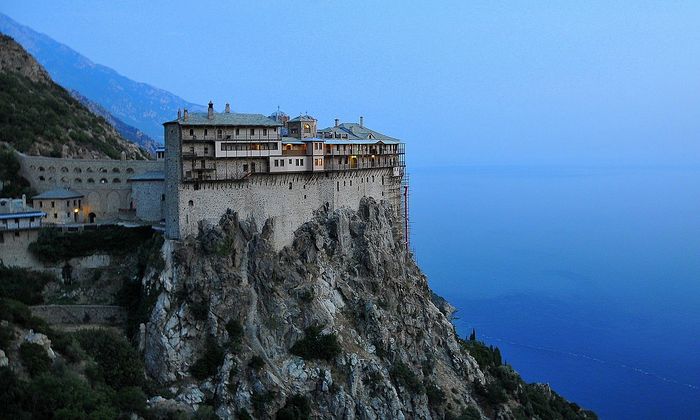 Simonospetras Monastery is a contemporary of Pochaev Lavra, younger than Kiev. Photo: sott.net
Simonospetras Monastery is a contemporary of Pochaev Lavra, younger than Kiev. Photo: sott.net
And Western media would be happy to continue this portrayal of an ancient Phanar (whose main functioning church is roughly a contemporary of Moscow’s Sretensky Monastery’s old catholicon) and a young Rus’.
To put things in perspective: Today, the second Sunday of Great Lent, is also the feast day of the most glorious Holy Hierarch St. Gregory Palamas. St. Gregory lived in the early fourteenth century, whereas St. Andrew of Kiev, co-founder of the Kiev Caves Lavra was born prior to the Great Schism in 983, and reposed in 1073. This means that by the time Holy Hierarch Gregory Palamas lived, there were already great saints in Kiev.
This by no means is intended as disrespect for Constantinople or the Hellenic world—we all honor our glorious Holy Hierarch St. John Chrysostom, Archbishop of Constantinople and the early fathers. No one questions that the Rus’ people received Baptism from glorious Constantinople. But the Phanar is playing with a double standard—pretending that the laws of the Roman Empire still apply to them, but the laws of Kievan Rus’ should not apply in Rus’.
St. Peter Mogila
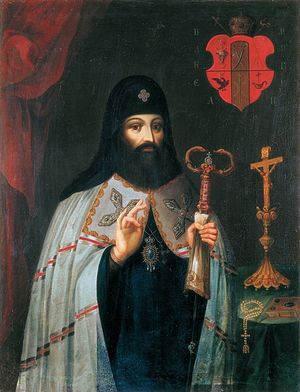 Metropolitan Petro Mohyla The Holy Hierarch Peter Mogila, Metropolitan of Kiev (1596-1646) has always been one of my favorite saints,5 and although his works were “highly regarded” by St. John of Shanghai6, I am often sad at how rarely his story is told. Simply put, this holy man saved Orthodoxy in the Ukraine, Rus’… and probably far beyond her borders.
Metropolitan Petro Mohyla The Holy Hierarch Peter Mogila, Metropolitan of Kiev (1596-1646) has always been one of my favorite saints,5 and although his works were “highly regarded” by St. John of Shanghai6, I am often sad at how rarely his story is told. Simply put, this holy man saved Orthodoxy in the Ukraine, Rus’… and probably far beyond her borders.
While volumes could be written on his works, this one rare quote of his is very telling of the type of person he is:
“I often thought and mused about how crucial it is in schools to teach not only the external sciences, but even more so, and above everything else, that schools instill piety, which must be rooted and sown in your young hearts, because without it, all wisdom is foolishness before God.”
He was born a nobleman into a princely family, he became a monk, archimandrite, and primate; he was an academic doctor trained in the University of Paris, he was a philosopher, linguist, liturgist, reformer7, publisher, printer, pedagogue and theologian, and one of most tragically underappreciated, yet greatest missionaries and holy hierarchs in Eastern Europe.
Even if they don’t know his name, almost every Orthodox Christian was personally affected by his legacy.
Peter Mogila founded the first Orthodox seminary.
Yes, of course, there were obviously methods of training clergy prior to Peter Mogjla, but in his Kiev Brotherhood-Mogila collegium, he was the first Orthodox hierarch to take the rigorous academic studies of the great European universities and bring them together with the ascetic spiritual arena of the monasteries. His method created a means of simultaneously enlightening and teaching both the mind, and the heart, and at the same time, usurping the logical mind from its tyranny over the human psyche, and brining it down into the heart. For the first time, contemporary academia coexisted alongside genuine Orthodox piety.8
Before there was the university of Athens, or the Greek-Latin-Slavic Academy in Moscow, there was the Kiev school of Peter Mogila.
I consider him one of the four Evangelists of Eastern Slavic printing, together with his contemporaries St. Job of Pochaev, Ivan Fyodorov of Moscow, and Polish-Ukrainian nobleman Prince Konstanty Wasyl Ostrogski.
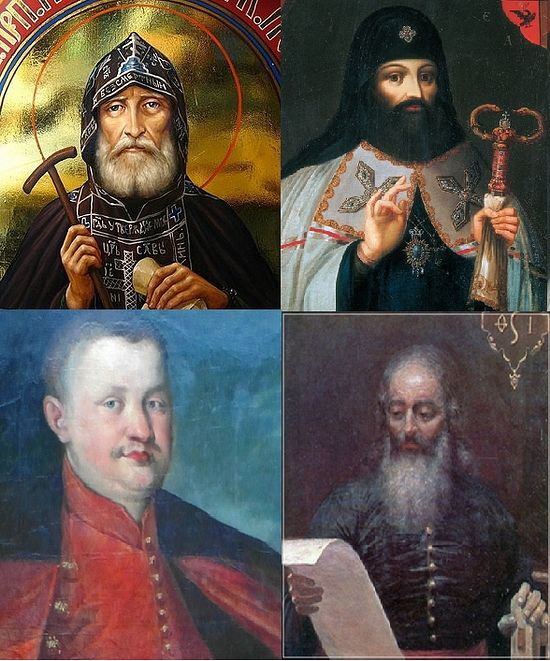 Left to Right: St. Job of Pochaev, Petro Mohyla, Konstanty Wasyl Ostrogski, Ivan Fyodorov.
Left to Right: St. Job of Pochaev, Petro Mohyla, Konstanty Wasyl Ostrogski, Ivan Fyodorov.
During the time of the Uniate heresy, Peter Mogila began to use his school for missionary work, eventually beginning the movement of mass literacy in Little Russia (Ukraine). What Sts. Cyril and Methodius did for the Slavic alphabet, those four did for Slavic printing, enabling Orthodoxy to finally counter, not only spiritually, but also academically and scientifically, the heresies in the West9, using the new technology of the printing press for the service of God, the Church, and the nation.
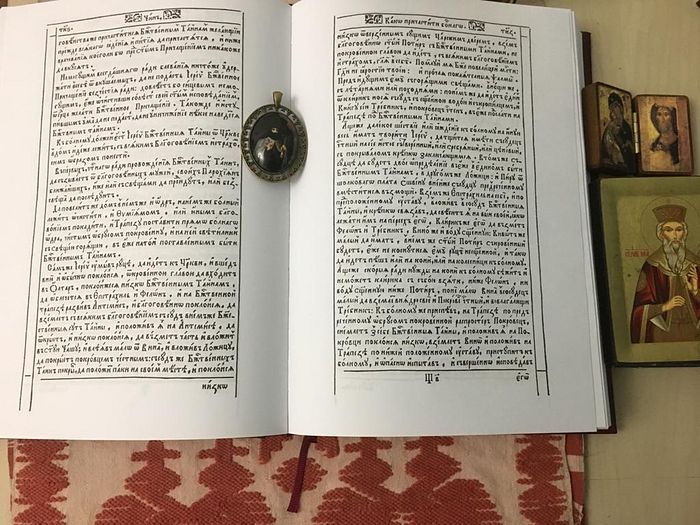 The Trebnik of Metropolitan Petro Mohyla
The Trebnik of Metropolitan Petro Mohyla
He was a man who, above all, truly understood the missionary spirit the Church desperately needed. He saw the Uniate-Jesuits running around Ukraine like Borgias, perverting the souls of the people, serving the corrupt interests of Rome. As a pioneer of early mass media, he countered the propaganda with the truth, with love, and with the faith—without the need for knavish riots or insults, but instead demonstrating the moral superiority of Orthodoxy through charity.
A famous Syrian historian and Melkite Archdeacon Paul of Aleppo, passing through Kiev, saw first hand the fruits of Mogila’s work. These were his words:
“Even villagers in Ukraine can read and write … and village priests consider it their duty to instruct orphans and not let them run in the streets as vagabonds.”
Peter Mogila impressed upon all his clergy the need to not be elitist Jesuits, withholding knowledge from the common folk, or to hide within the walls of the Lavra, but to get out and teach the people through real interaction.
This is once again what Ukraine and all Orthodoxy desperately needs now, more than ever. Many are baptized, but so few are religious, and religious education is what Orthodoxy needs. This contributes most acutely to the situation in Ukraine.
The idea that the schismatics under the newly-formed structure of the “Orthodox Church of Ukraine” represent Orthodoxy is ridiculous. Illustrative is this simple video, in which schismatics who came to riot against the canonical Church were called upon to recite prayers, by faithful clergy and laity. The schismatic partisans, whom the Phanar regards to be Orthodox, failed to recite even the Lord’s Prayer from memory, yet they seem to always remember the words to their “Glory to the nation—death to the enemies” chant.
In Peter Mogila’s time, there was the same issue. Hierarchs had abandoned Orthodoxy to live like feudal warlords in the Catholic union, while the rivers of western Ukraine ran red with martyrs’ blood, and Transcarpathia became another Golgotha. Did he do nothing? No!
Peter Mogila and St. Job of Pochaev took a prayerful stance, and they went out to counter the darkness with the light of wisdom and theology. They published great works!
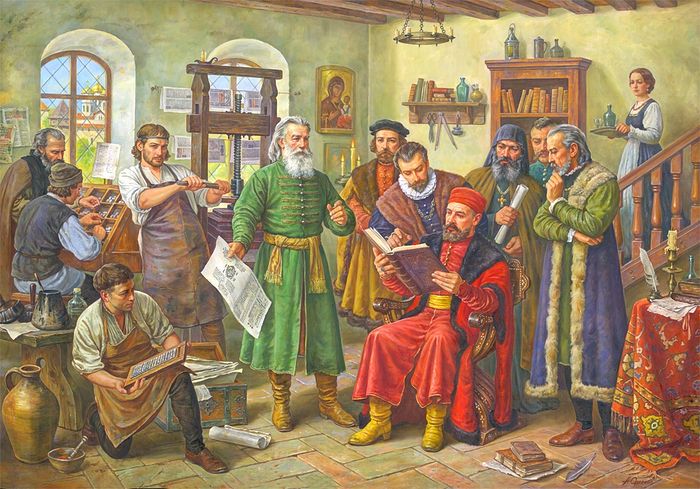 Saint Job of Pochaev (in monastic garb) reviews the Ostrog Bible, the first Slavonic book printed on a press, together with Prince Ostrogski (in red), and Ivan Fyodorov of Moscow (in green). uk.m.wikipedia.org
Saint Job of Pochaev (in monastic garb) reviews the Ostrog Bible, the first Slavonic book printed on a press, together with Prince Ostrogski (in red), and Ivan Fyodorov of Moscow (in green). uk.m.wikipedia.org
This is what we need now!
I can imagine the ultra-conservatives of their days could have even slandered them. “What is a monk doing trying to run a publishing house or playing with a printing press?!” In many ways, to my great sadness, I imagine there are some that think the same way about modern Orthodox media, priests who make videos on YouTube, etc. I myself have even been told there is no point “wasting time” writings articles on the schism…just pray and ignore it.
But it is not easy to ignore when your Orthodox land is being ravished by schism, when your people are dying; and quite frankly, you can pray and write articles at the same time!
For this reason, in my view, Orthodox media projects such as this another other websites continue that legacy of Peter Mogila; Jordanville Monastery’s printing house not only bears the name, but is literally the direct continuation of St. Job’s Pochaev Press.
We need nothing less than the restoration of the old Ruthenian Brotherhoods—those unions of lay people, monastics, and simple clergy who worked together teaching against schism in the days of Peter Mogila. That self-sacrificing missionary spirit and desire to spread Orthodoxy through authentic fellowship and new technologies preserved the faith in those days; and while there are also major risks, the internet provides us these opportunities again today. May God help us all to use it wisely, through the prayers of those holy people.
Abyssus abyssum invocat—you can’t compromise with heresy
While reading about the Kievan saints commemorated today, I also happened to come across the interesting life of St. Alexis of Goloseyevsky, who, among other things, predicted1011 the assassination of Emperor Alexander II of Russia.
Emperor Alexander II was a tragic figure, and also slightly polarizing among monarchists given his more liberal views. Nevertheless, almost all would agree that the tsar rightfully wanted to bring an end to slavery and feudalism through the emancipation of the surfs, which was at the time, an almost revolutionary idea in conservative circles, especially among the very conservative ancient nobility who in many ways felt threatened by the emergence of the capitalist and liberal nouveau riche.
And so who killed the “westernizing, liberal, revolutionary” Emperor, who tried to establish a constitutional monarchy? The conservatives? A group of evil princes who didn’t want to lose the autocratic system? No…Alexander II was assassinated by liberal, western-leaning revolutionaries.
Indeed, the most liberal of all Russian tsars, trying to build a constitutional monarchy, was assassinated by the liberals, who wanted a constitutional monarchy.
I remember being told by a wise priest from the Russian Church Outside of Russia that this is the microcosm of why revolutionary ideology is a lie, that it was never about helping the people, but all about lust of power and the violent attempt to seize it. Ironically…on this same feast day this year, the assassination of Emperor Paul I is also commemorated.12
Another stunning example is Prime Minster Pyotr Stolypin, a statesmen and reformist who many believed, had he not also been assassinated, would have been capable of saving Russia from the revolution by implementing very carefully and responsibly the needed reforms.
His reforms are impossible to explain in full scope here, but oversimplified, he wanted to abolish the antiquated remnants of the feudalist agriculture system, and create one based on ownership by individual farmers of private property.
The style of single homestead, independent farms is known in Ukrainian and Southern Russian culture as khutors—as in the famous work of Gogol, “Evenings on a Farm [Khutor] Near Dikanka”. The khutor is the opposite of the old Russian obschina, the collective farm.
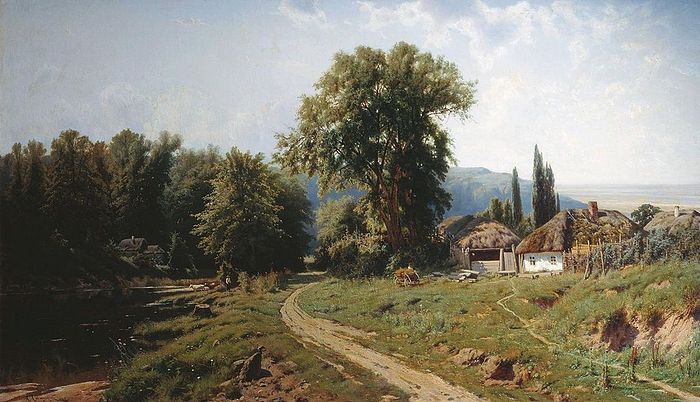 Khutors are famously characteristic of Ukrainian culture. “A Khutor in Little Russia” Konstantin Kryzhitsky, 1884
Khutors are famously characteristic of Ukrainian culture. “A Khutor in Little Russia” Konstantin Kryzhitsky, 1884
The great Dostoyevsky also agreed with Stolypin on private ownership (as opposed to Tolstoy who preferred the collective system). Dostoyevsky said: "If you want to transform humanity for the better, to turn near beasts into humans, give them land and you will reach your goal."13
Nonetheless, even though he strived to improve the lives of both farmers and urban dwellers, he was yet again assassinated by the revolutionaries, and his grave lies before the Trapeza church in the Kiev Caves Lavra, the current cathedral of the Ukrainian Orthodox Church.
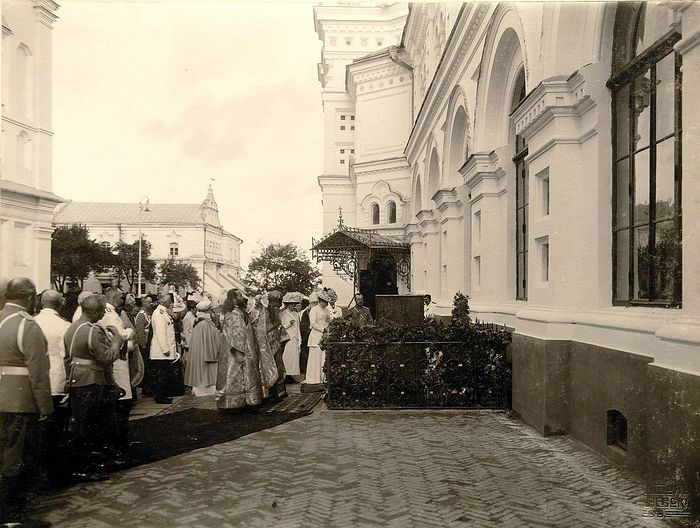 The Imperial Family visits the grave of Pyotr Stolypin in Kiev Caves Lavra where it remains to this day. Photo: pravlife.org
The Imperial Family visits the grave of Pyotr Stolypin in Kiev Caves Lavra where it remains to this day. Photo: pravlife.org
From this, we learn an important lesson—you can’t negotiate with extremism, be it revolutionary, fascist, Bolshevik. Even if you give them what they want, they would happily kill you anyways.
To this same end, there is a lesson in the ecclesiastical life of Ukraine, and the world.
We can’t negotiate with heretics and schismatics. Papist, Ecumenist, Old Believer, Old Calendarist, nationalist, whatever the heresy, it has no place in the Church.
This is the crucial mistake of the Phanar. While it seems more likely they undertook these actions in Ukraine under the instruction of western powers controlling them, in the event they genuinely believe they can receive schismatics without repentance… this will and has failed miserably.
Already the schismatics have turned on each other, the Phanar, with Philaret directly contradicting Epiphany and Bartholomew. There can never be compromise with heresy.
In conclusion, I can only wonder what the countless saints of Kiev must think of this current situation. I think of old saints like Anthony of Kiev, and new ones like Raphael of Brooklyn who studied there. I can’t help but wonder Ubi sunt (Baruch 3:16), in Slavonic: Гдѣ жє сyть; which is to say: Where are they? Where are our princely saints Vladimir and Alexander, our knights Ilya of Murom14 and Dobrinya, our Hetmans Bogdan Zinovii Khmelnitsky and St. Peter Kalnyshevsky?
It feels like all the earthly powers of the world support the schismatics.
I worry for my friends in the Lavra, and for its holy walls, because I rejoice in her stones, and her dust would move me to tears.15
Then something else moved me to tears. My weakness and lack of faith. “Where is your faith?” I remember a friend telling me.
Once I expressed my fear to a Ukrainian girl that the schismatics would seize the Kiev Caves Lavra as they have been seizing churches from the canonical Ukrainian Orthodox Church throughout Ukraine. She almost laughed at me. She said to me “The Lavra belongs to the Mother of God! She won’t let that happen.”
I also remember another conversation I had with a Carpatho-Rusyn girl. When she was in the Lavra, she spoke worriedly with a woman on the same subject. The woman responded, “Do you know where we are!? (inside the Kiev Caves are the uncorrupt bodies of countless saints). The Lord will set everything right!
The two faithful Orthodox ladies agreed that surrounding them were all the saints of Kiev from over a thousand years. With such spiritual defenders all around them, how could they be afraid?
This is the kind of spiritual strength you receive when you walk the Lavra grounds… You can look upon saints from bygone years.
You see them all, from the very beginning of Kievan Rus'… and they all see you.
You are under their protection.
Those Orthodox Ukrainians do not fear whatever evil would dare attack the Lavra... Of course, the Theotokos will save her Lavra, and not our worrying!
From this I also realized that truly Orthodox women have saved our faith in all our lands, while we with all our polemics and theological knowledge sometimes forget that it was our mothers and grandmothers who gave us our Orthodox upbringing.
These thoughts reminded me once again not only of the greatest woman in the world…but the highest creature in creation—the Mother of God. Yes...of course... our Guiding Directress was always there in the Kiev hills, wasn't she? Yes, our Champion Leader! She will defend her own—her Son will not allow His Mother’s portion to fall.
Even if they come with the armies of hell…
1 http://orthochristian.com/calendar/20190311.html
2 http://www.unz.com/akarlin/mammoths-and-patriots/
3 Referring to the entire unity of the Russian Church, both in Russia, Ukraine, Belarus, abroad, etc.
4 I am not discounting the Mother of God visiting Athos, I am merely referring to the physical [brick and mortar] buildings and communities we see today…what is continually functioning today.
5 Currently, Peter Mogila is glorified for local veneration as a saint in the Ukrainian Orthodox Church: http://www.patriarchia.ru/db/text/996346.html
6 http://www.pravoslavie.ru/29140.html
7 In the sense of practical, internal, and administrative/educational reforms—not liberal Protestant theological reforms.
8 http://orthochristian.com/116252.html
9 http://orthochristian.com/116252.html
10 https://drevo-info.ru/articles/16563.html (in russian)
11 https://azbyka.ru/otechnik/Zhitija_svjatykh/velikie-russkie-startsy/18 (in russian)
12 http://orthochristian.com/calendar/20190311.html
13 https://www.rbth.com/arts/2013/12/07/stolypin_reformist_ahead_of_his_time_32375.html
14 Saint Ilya lies uncorrupt in the Kiev Caves.
15 Psalm 102

